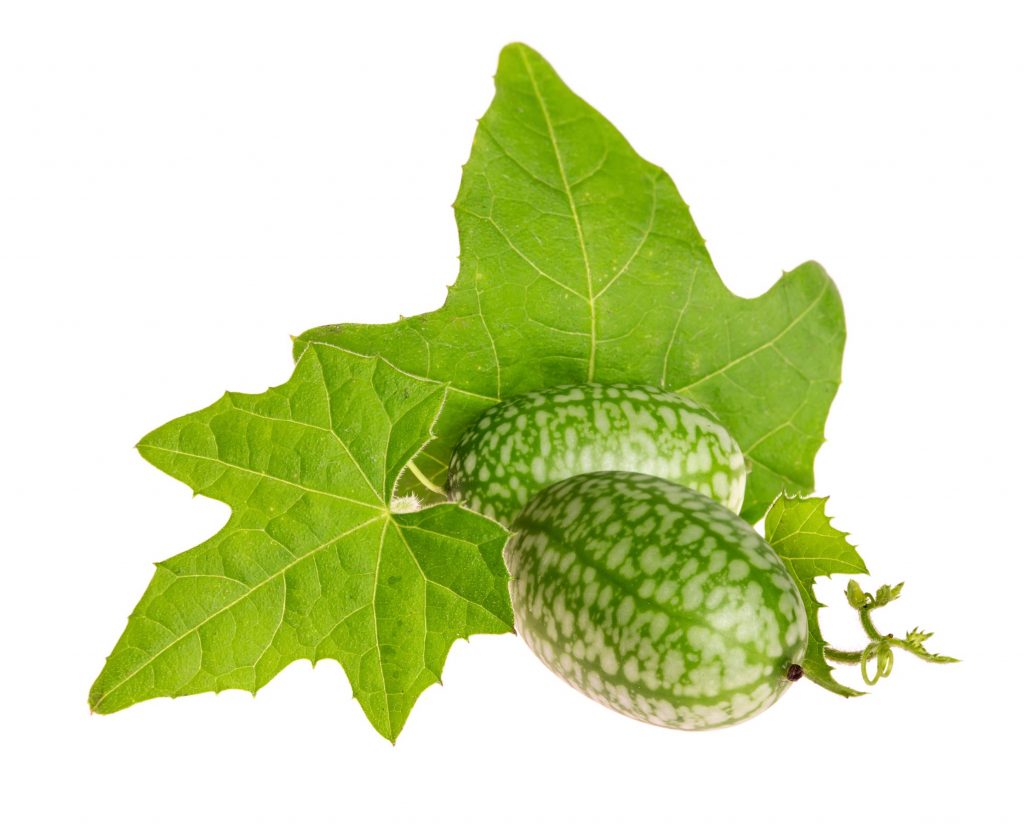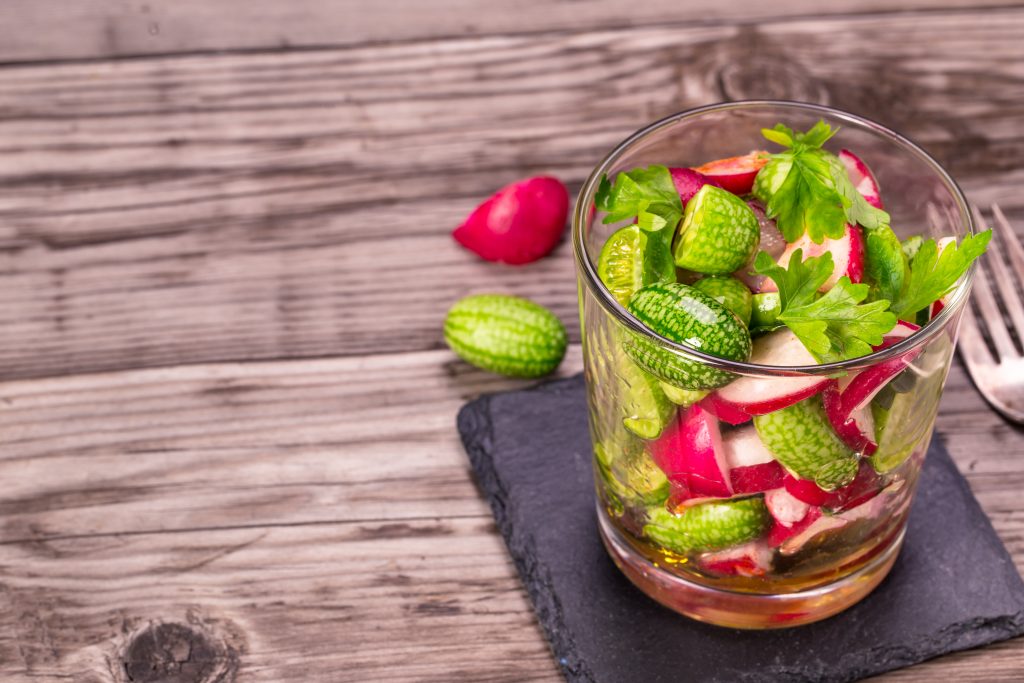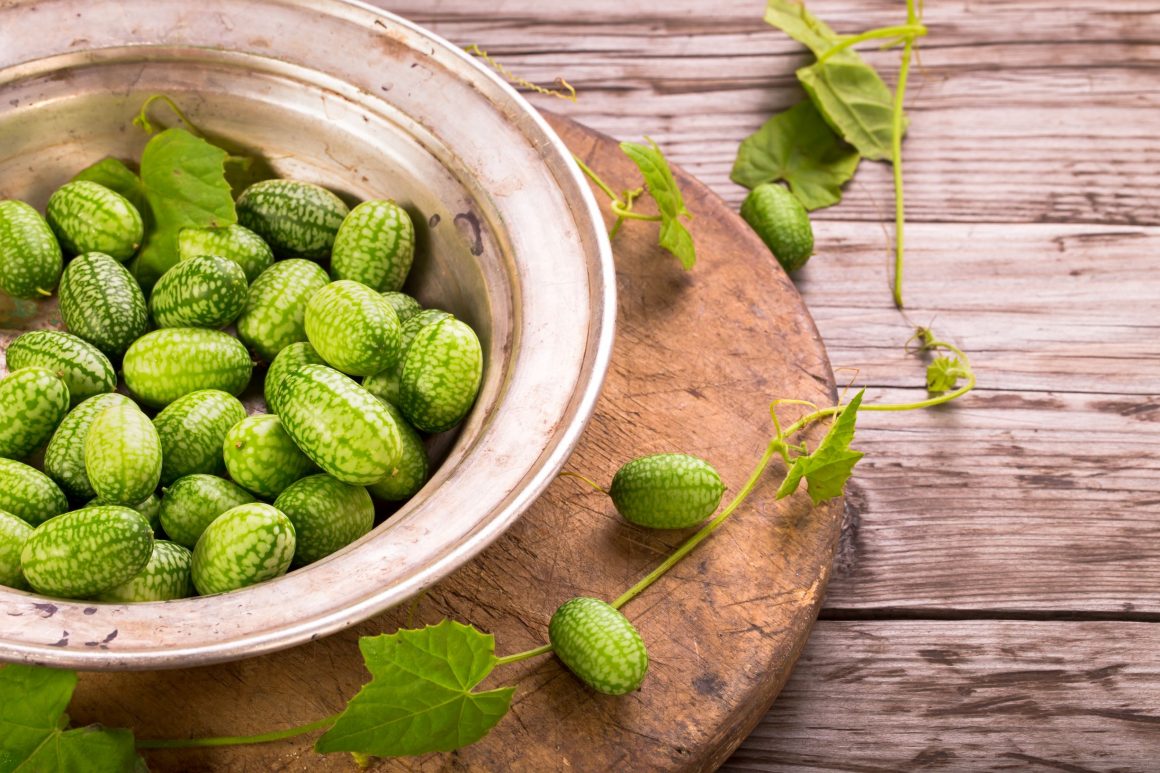They look like miniature watermelons, but they’re not. They taste like a mix of cucumber and lime, but they’re neither one of those. They’re Melothria scabra, otherwise known as cucamelons.
Native to Mexico and Central America, cucamelon is a type of vine that packs a lot of taste in its grape-size fruit. Besides being delicious, cucamelons are also chockfull of vitamins and minerals. What’s even better is that you can grow them in your own garden and enjoy their unique taste and health benefits all summer long.
Growing cucamelons in your garden
Cucamelons may look delicate but they’re surprisingly easy to grow. While ideal conditions for the cucamelon are hot weather, plenty of sun, and temperatures above 50 degrees Fahrenheit, this is a resilient plant that can grow in almost any region.
It’s best to start the process of growing cucamelons around April or May. You should first sow the seeds in a container or a pot and give them around 4 weeks to develop. Leave the container outside during the day, but don’t forget to bring it back inside the house overnight to protect them from spring frost. Once the night temperatures start to rise, you can plant the seeds in the ground outside.

After you plant them in soil, it will take between 1-2 weeks for cucamelons to germinate. Make sure you set up a trellis panel or a cage so the plant can climb once it starts growing. Cucamelons should be watered once a week, but if the weather gets very hot and dry, you can increase your watering to twice a week.
Cucamelons are a very hardy species and are surprisingly good at resisting pests, drought, and mildew. They’re slow growers, so be patient and wait for the fruit to ripen before you pick it. Cucamelon fruits are ready to be harvested once they’re the size of grapes and firm to touch.
Health benefits of cucamelon fruit
Despite being low in calories, cucamelons are very filling due to their high fiber content. This means they make a perfect guilt-free snack.
This miniature fruit is packed with vitamins, minerals, antioxidants. The fruit contains significant amounts of lycopene and beta-carotene, two antioxidants necessary for optimal health.
While lycopene is not an essential nutrient, it protects the heart against cardiovascular diseases and lowers the risk of diabetes, Alzheimer’s disease, and certain types of cancer. Beta-carotene, on the other hand, is a provitamin that is converted into Vitamin A in the body. Vitamin A reduces the risk of cataracts, promotes skin and hair regeneration, and keeps the immune system healthy.
Cooking with cucamelons
Cucamelons may be miniature size, but there’s plenty you can do with this adorable fruit. You can chop them up and add them to your salad or salsa. Because of their tangy taste, cucamelons will give an instant dose of flavor to a boring bowl of greens.

If you’re a martini drinker, you can use cucamelons instead of olives to garnish your cocktail. They look and taste completely different from olives, so using them is a great way to wow your friends at dinner parties.
Finally, you can simply eat cucamelons as Nature intended. You don’t have to remove the peel, just wash them under running water and enjoy this refreshing snack all summer long.
Sources:
https://practicalselfreliance.com



Leave a Reply